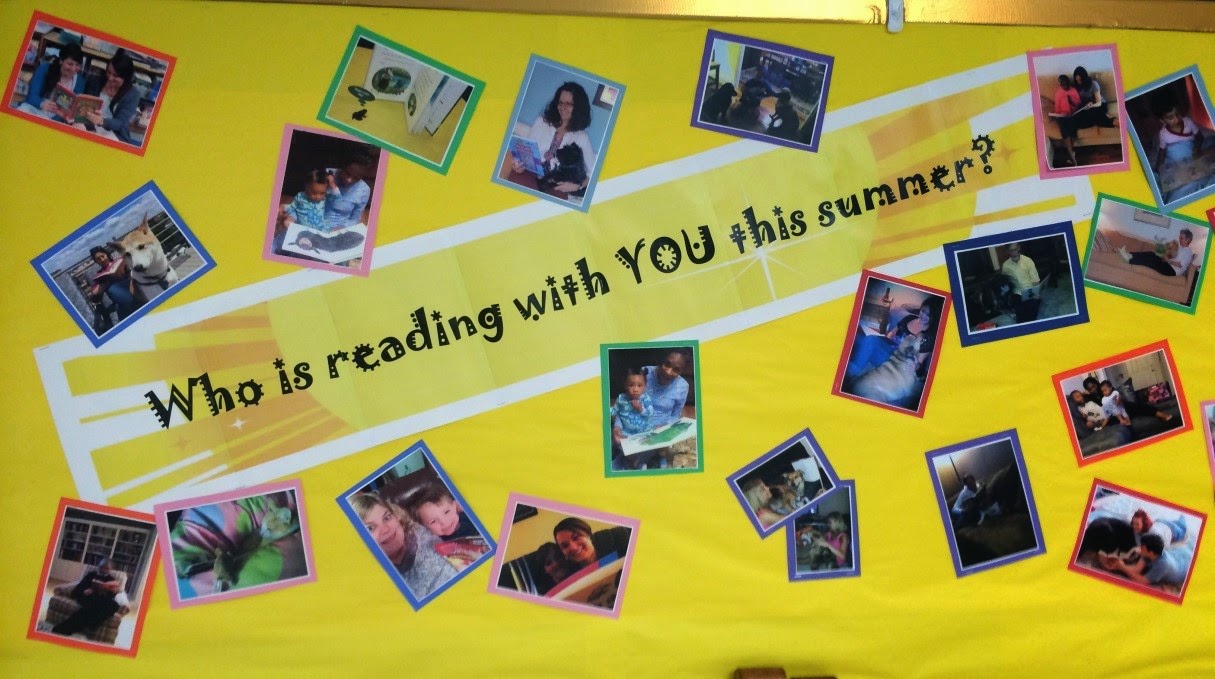In this post, Heather Jung shares how she ends the year with her students.
The
end of the school year can be a stressful time for both teachers and
students. Routines shift after
end-of-year testing is done. This can be a confusing time for ELL’s; who often
rely on familiar stable routines for support. But this time of year is
especially critical for them because they will be away from us, and possibly
from the English language, for two months!
We need to provide highly supportive instruction during this critical
time. This instruction should be focused on building independence and love of
learning. Students who are motivated and
confident are more likely to pursue summer activities that will not only
prevent summer slippage, but will build prior knowledge and enhance the
learning that will occur in the fall.
Here
are some great end-of-year activities being done by teachers at my school:
Hallway Display:
Inspire students to think
about who they will read with this summer by showing teachers reading with
someone in their home.
Grade 1:
Encourage students to think about science, social
studies and math by making bags out of old T-Shirts and then going shopping at
the Farmer’s Market.
Grade 2:
Promote summer reading by
having students to decorate T-Shirts to advertise their favorite books.
Grade 3:
Demonstrate how reading can inspire creativity. These students made “candy rooms” inspired by
Charlie and the Chocolate Factory by Roald Dahl and then sold them to
practice economics.
Guided Reading:
Read book one of a series;
so that students will fall in love with characters that they will be able to
read about throughout the summer. These
second grade ELLs are reading The Boxcar Children by Gertrude Chandler
Warner.












